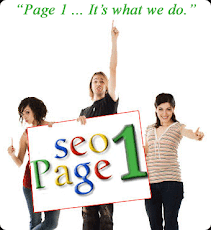The one assumption you need to make to follow along with me in this article is “People Buy People.” It can be a hard concept for many people to understand and agree with. However, millions of spent dollars have proven this premise to me, so I consider it more of a law than a theory.
If you understand the rule that people buy people, then your website MUST have a pleasant atmosphere that allows the visitor to connect with you, your company and your products.
By now, you've heard me talk about our Celebrity Branding™ philosophies, and the fact that you need your picture on your website goes without saying. But, there are some smaller, often overlooked, areas that shouldn't be forgotten.
Here are three simple tip to make your website user-friendly:
1. Navigation
The navigation on your site is probably its most important element. If visitors find your site confusing or cannot successfully navigate through it, they will leave. Make your navigation bar as simple as possible. One of the worst mistakes is using an expanding navigation bar that makes the visitor scroll over it in order for the menu to reveal their options. Most often, this type of navigation bar has too many choices; your visitor doesn't know where to go, so they get flustered and leave.
Navigation on your site is an art, and you should direct your visitors through a logical path to where YOU want them to go (not to where they think they want to go). One way to do this is through call to action buttons or CTAs. We use these buttons on all of our sites; a visitor will go to a main page, and then we can direct them to the parts of that site that we want them to be aware of. We use this method instead of an expanding menu, because we find that it is more logical for visitors. With this method, you can direct visitors to where you want them to go, allowing you to control the buying process.
Quick Tip: most “expanding menus” are created in Macromedia Flash. Search engines cannot read Flash, and therefore they will not pick up these links on your website. If the search engines do not pick up the links on the navigation bar and these links are nowhere else on your site, they cannot accurately crawl or index your site. This is search engine suicide, because without even knowing it, you are stopping search engines from understanding what your site has to offer and from driving traffic to you.
A good rule of thumb is that a visitor should be able to get to every page on your site with two clicks from your home page. Now, this is not realistic for very complex sites. If your website is complex, you can have a sitemap to help visitors navigate. Some sort of search function may also be a good idea for your site.
2. Page Load Speed
It's hard to believe that some people are still stuck using dial up. Even if you have entered the world of high-speed Internet, no matter what you do, some websites will load slowly. (If you're frustrated using high-speed Internet, imagine the frustration of those on good ‘ol dial up!)
Page load speed is VERY important. I know that when I am surfing the Internet and I stumble upon a site that loads slowly, I get annoyed, frustrated, and don't browse the site for very long. If your website is loading slowly, you are probably losing out on valuable customers, no matter what business you are in.
In today's web world, we are seeing more and more images, audio files and videos. These things are useful, but you have to be careful that they do not affect the inner workings of your site (in this case, the time it takes for a web page to load). You want to be careful about the size of the images on your website. Both large-sized images and using too many images can cause your website to take too long to load, resulting in visitors leaving. Another tip is to convert videos into a jpeg (image) that only loads and plays the video when a visitor clicks on it. Yes, you may be adding more images to your website, but these are usually small image files; in the hierarchy of the web, a video will slow down your website much more than a small image.
Another factor that can influence the load time of your website is the amount of excess code you have on your site (that is a topic for another day - but ask your webmaster, and they will know what I am talking about).
3. Information
The number one thing that visitors look for is information. They are coming to your site to be educated about your products and/or services and, most of all, how THEY can benefit. With this in mind, it is critical for the information on your website to be accurate, complete and up-to-date. Visitors will leave your site in a split second if the information you are providing is old news.
What's that best way to provide up-to-date information on your website? The best way we suggest is through blogs and articles. By having a section on your website for blogs and articles, you can provide new, relevant and educational information to your visitors. Adding them is not only simple, but it is fast too!
So there are my three simple tips for the month on how to make your website user-friendly. Although this covered just the beginning of what your website should contain, don't worry, I won't leave you stranded– I'll reveal even more tips in next month's article!
Related Links :
Internet Media Solutions l Superhostindo l Jababeka Business l Ayo Kencan l Kesaksian Kristen l Lirik Lagu Rohani Kristen
Subscribe to:
Post Comments (Atom)



.png)
No comments:
Post a Comment